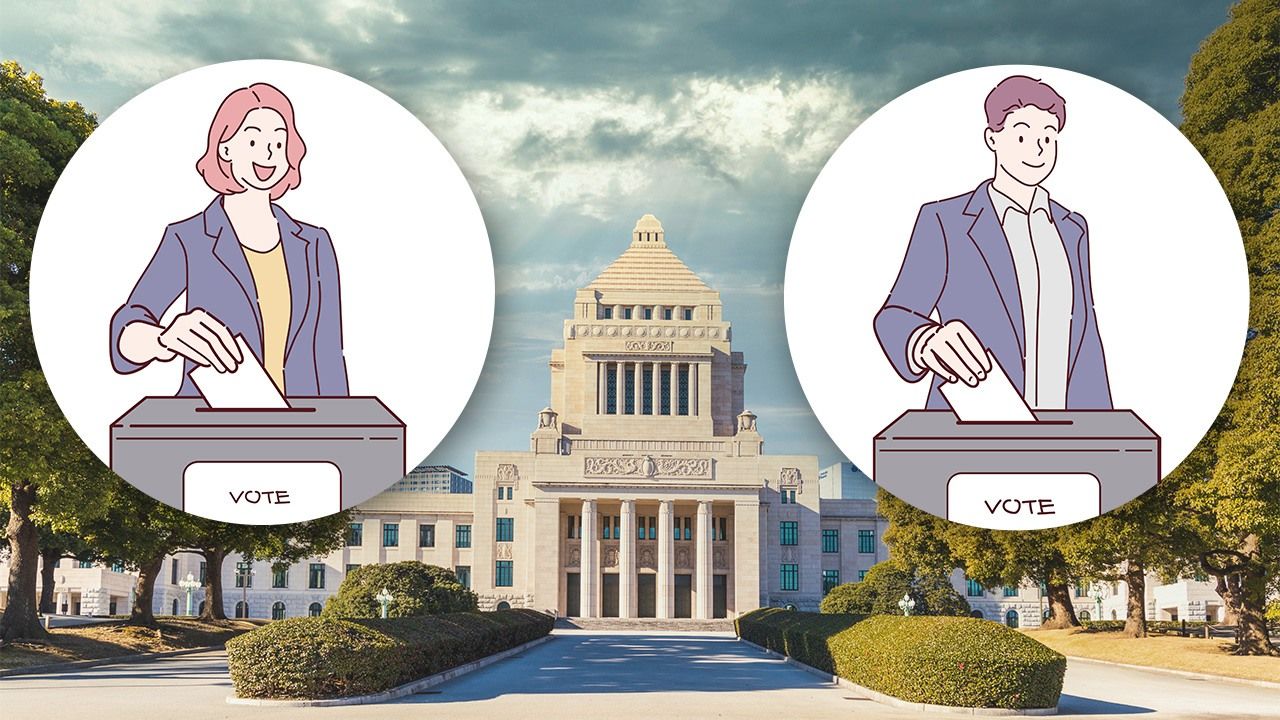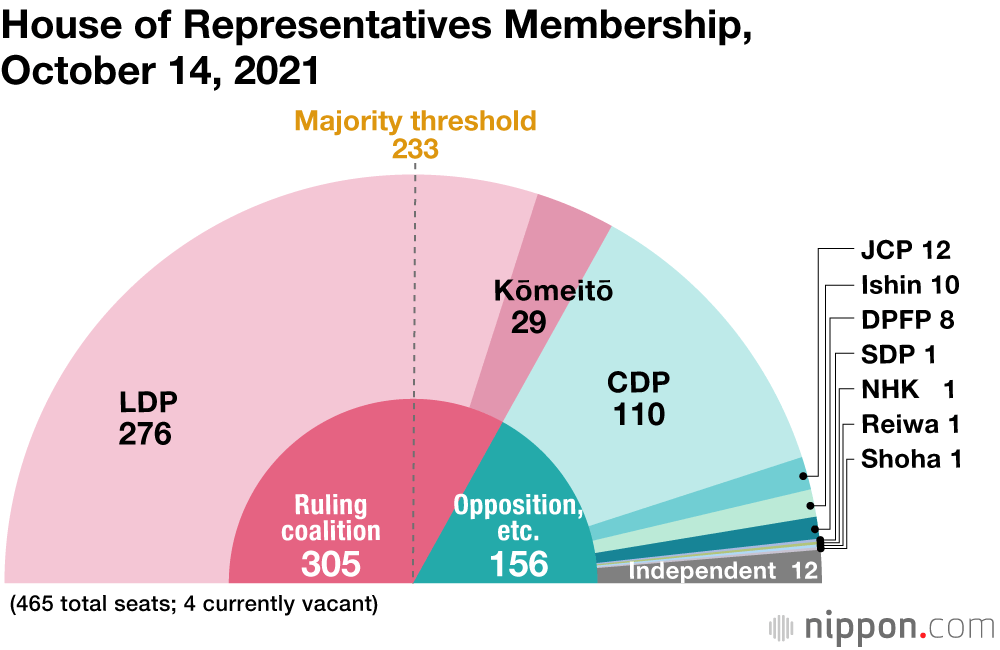
Japan’s 2021 General Election: Opposition Parties Coordinate Candidates in 200+ Districts for Halloween Contest
Politics- English
- 日本語
- 简体字
- 繁體字
- Français
- Español
- العربية
- Русский
Prime Minister Kishida Fumio dissolved the House of Representatives on October 14, 2021, calling the first lower house election since 2017 only 10 days into his administration. The popular focus will be on the government’s COVID-19 response and economic measures as voters head to the booths.
With the ruling coalition of the Liberal Democratic Party and Kōmeitō on one side, the opposition parties, headed by the Constitutional Democratic Party of Japan (CDP), are positioning this contest as one presenting the electorate with a choice of which parties will lead the nation from November onward.
On October 19, there was confirmation of the number of candidates running for each party in the 289 single-seat districts. Compared with 2017, the CDP has greatly increased its total, while the Japanese Communist Party has reduced its candidates by half.
Candidates Fielded in the 289 Single-Seat Districts
| 2017 | 2021 | ||
|---|---|---|---|
| Ruling coalition | LDP | 277 | 277 |
| Kōmeitō | 9 | 9 | |
| Opposition | CDP | 63 | 214 |
| JCP | 206 | 105 | |
| Nippon Ishin no Kai | 47 | 94 | |
| Democratic Party for the People (DPFP) | ― | 21 | |
| Social Democratic Party | 19 | 9 | |
| The Party Fighting Against NHK | ― | 27 | |
| Reiwa Shinsengumi | ― | 12 |
The CDP and JCP led efforts to coordinate the fielding of candidates to avoid robbing other opposition party members of votes. Nippon Ishin no Kai (Ishin, or the Japan Innovation Party) did not play along, but three other opposition parties—the DPFP, SDP, and Reiwa—joined the CDP and JCP in selecting single opposition candidates to run in more than 210 of the nation’s 289 single-seat districts. This has resulted in one-on-one contests in some 130 districts, pitting ruling party picks against the opposition candidates while avoiding a split opposition vote. Voting patterns in previous elections show that, especially in heavily urban districts, single opposition candidates perform strongly, indicating a possibility that they may be able to flip a number of seats in the October 31 vote.
As of October 14, when the extraordinary session of the Diet closed, the LDP held 276 seats and Kōmeitō 29, forming a 305-member ruling coalition that comfortably cleared the majority threshold of 233 seats in the 465-seat chamber. Prime Minister Kishida, at a press conference that evening, set a less than ambitious goal for the coalition in the election, stating that the ruling parties would measure their success according to whether they held on to their majority.
Apart from a simple majority, other possible targets for success would include the “stable majority” level of 244 seats, which would allow the coalition to chair all permanent lower house committees and ensure at least parity with the opposition in committee membership numbers; the “absolute stable majority” of 261 seats, which would allow it to chair and maintain a majority of seats in the committees, and a 310-seat two-thirds majority (also required in the House of Councillors) to pass revisions to Japan’s Constitution.
In addition to the winning candidates from the 289 single-seat districts, an additional 176 members are selected in voting for 11 multiseat proportional representation blocks. On their ballots, voters select one candidate for the local seat, along with a political party for the PR block, resulting in a situation where a candidate can lose in the single-seat vote but still make it into the House of Representatives as the PR pick.
Japanese citizens aged 18 and older are eligible to vote in the municipality where they are registered as residents. Voting in principle takes place in person at polling stations from 7:00 am to 8:00 pm on election day, and votes are tabulated immediately after the polls close.
Key Politicians Not Running for Reelection
| Party | Name | Position |
|---|---|---|
| LDP | Ōshima Tadamori | Former speaker, House of Representatives |
| Kawamura Takeo | Former chief cabinet secretary | |
| Hase Hiroshi | Former minister of education, culture, sports, science, and technology | |
| Ibuki Bunmei | Former LDP secretary general | |
| Shiozaki Yasuhisa | Former chief cabinet secretary | |
| CDP | Akamatsu Hirotaka | Former minister of agriculture, forestry, and fisheries |
| Kōmeitō | Ōta Akihiro | Former Kōmeitō chief representative |
| DPFP | Yamao Shiori | DPFP public relations chief |
(Originally published in Japanese. Banner photo © Pixta.)
